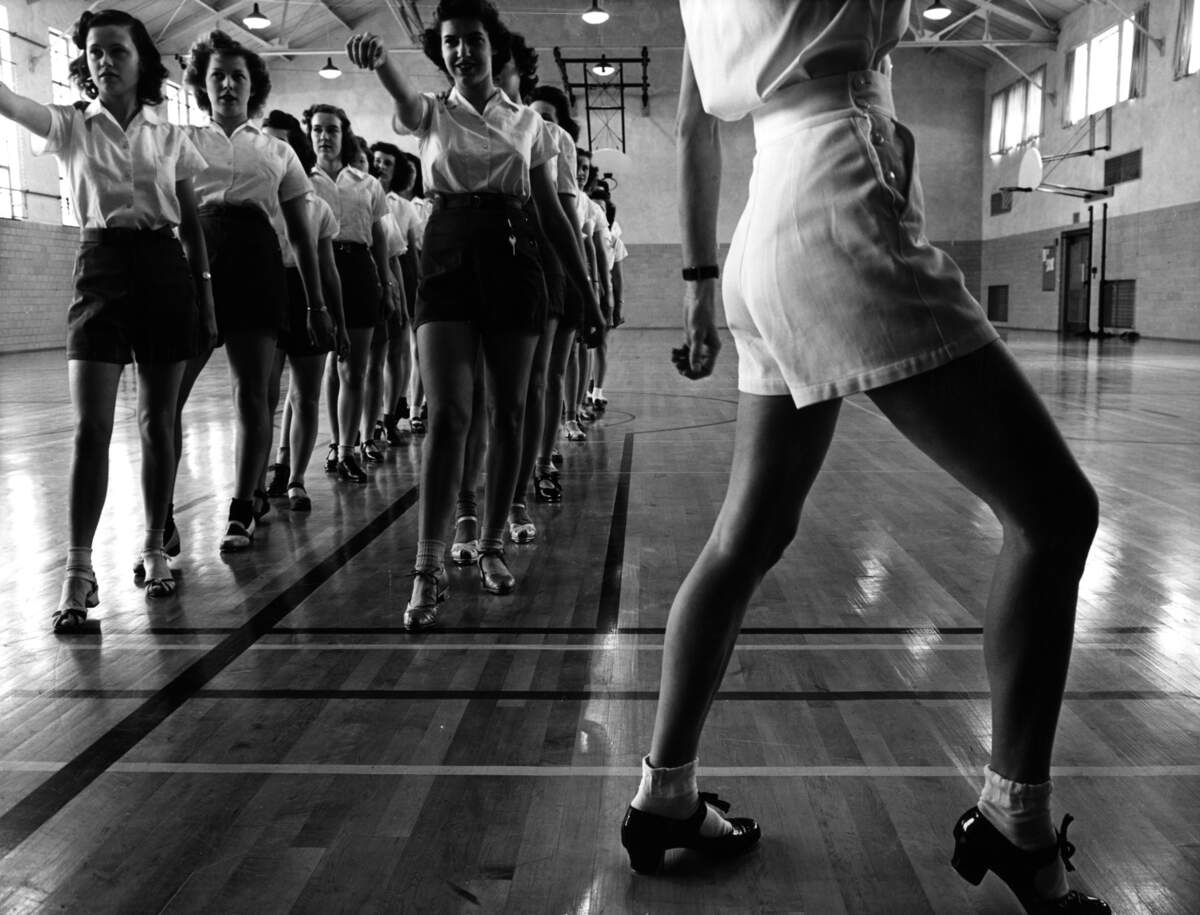

National Tap Dance Day
Observed
annually on May 25th (since 1989)
Dates
Founded by
President George. H.W. Bush on November 8th, 1989
Carol Vaughn
John Conyers
Linda Christensen
Nicola Daval
Hashtags
Sources
http://taplegacy.org/tapdanceday/about/
https://en.wikipedia.org/wiki/National_Tap_Dance_Day
https://www.amazon.com/dp/1598888587?tag=checkiday08-20
https://www.britannica.com/art/tap-dance
https://www.congress.gov/bill/101st-congress/house-joint-resolution/131
https://www.congress.gov/bill/101st-congress/senate-joint-resolution/53
National Tap Dance Day, started in the United States and primarily celebrated there, but also marked around the world, celebrates the American art form of tap dancing. In 1988, tap dance enthusiast Linda Christensen was a graduate student at George Washington University who had an assignment to report on a piece of legislation. During her research, she came across a resolution introduced by Representative John Conyers [D-MI] that had designated jazz as a national treasure. After meeting with Conyers' legislative director, Cedric Hendricks, to learn more about the resolution, she thought something similar could be done with tap dancing. She shared her idea with her tap teacher, Carol Vaughn, and a tap class friend, Nicola Daval.
In order to graduate, Christensen was required to complete an internship at a non-profit organization. She came up with an idea to establish her own non-profit—which would fulfill her internship obligation—and to draft a tap dance commemoration resolution: the resolution for National Tap Dance Day. Accordingly, Christensen, Vaughn, and Daval established the Tap America Project. Christensen, along with Daval, went back to Hendricks, who declined the idea for the day on behalf of Conyers. But soon afterward, Conyers heard tap dancer Charles "Honi" Coles talk about the similarities between jazz and tap and their importance to American and African American history in an interview on National Public Radio, and he reconsidered and decided to take up the legislation. He persuaded Senator Alfonse D'Amato [R-NY] to sponsor the legislation in the Senate.
On September 23, 1988, Conyers introduced House Joint Resolution 662. It was late in the legislative season, so this first resolution was primarily for informing people about the idea for the day. Additional awareness for the day was raised that same month when members of the cast of the upcoming film Tap—including tap dancers Sandman Sims, Savion Glover, Harold Nicholas, and Gregory Hines—appeared at a Congressional press conference to discuss the art of tap dance, the film, and the legislation for the day.
In the new Congress, on February 7, 1989, House Joint Resolution 131, sponsored by Conyers, and Senate Joint Resolution 53, sponsored by D'Amato, were introduced to designate May 25, 1989, as National Tap Dance Day. The Tap America Project sent out postcards to tap dance studios across the country encouraging members to send postcards to their Congressional representatives to ask them to cosponsor the legislation. Further support came at the hand of many figures in tap dance and the arts.
The resolution passed in the House on May 25, 1989, the date on which the first National Tap Dance Day was to take place. Although the resolution was not yet law, the day was viewed as being official and celebrations were held. The legislation eventually became law when it was signed by George H.W. Bush on November 8, 1989.
According to the resolution, "the multifaceted art form of tap dancing is a manifestation of the cultural heritage of our Nation, reflecting the fusion of African and European culture into an exemplification of the American spirit, that should be, through documentation, and archival and performance support, transmitted to succeeding generations." It said that tap dancing is an influence on other genres of American art and is "perceived by the world as a uniquely American art form"; that tap dance provides an outlet for creativity and self-expression for professionals and amateurs; and that "it is in the best interest of the people of our Nation to preserve, promote, and celebrate this uniquely American art form." The resolution said that Bill "Bojangles" Robinson "made an outstanding contribution to the art of tap dancing on both stage and film through the unification of diverse stylistic and racial elements," and it placed the date of National Tap Dance Day on his birthday, saying it "is an appropriate day on which to refocus the attention of the Nation on American tap dancing."
National Tap Dance Day is celebrated individually or in groups, with tap dance studios and other tap dance groups organizing events. For example, Arts Fifth Avenue in Fort Worth and Tap Extravaganza in New York City hold events annually. Workshops, performances, and tap jams are common occurrences. Studios have been known to send members to the streets to teach "Shim Sham Shimmy," a common tap dance move, to whoever wants to learn. Some cities organize events for the day.
Tap dancing originated in the United States, emerging out of an amalgam of a number of ethnic percussive dances: West African step dances, known as gioube, and hornpipes, clog dances, and jigs from Scotland, Ireland, and England. It grew out of urban areas, like New York City's Five Points district, where ethnic groups lived close to each other and adapted each other's dance styles, and where rhythms and techniques cross-pollinated each other. In the mid-to-late nineteenth century, dance competitions were common. They became known as "cutting contests," where two dancers would square off. At this time, what would coalesce into tap was most seen at minstrel shows. The dance continued to evolve over the decades, with styles influencing each other.
It wasn't until the 1920s that what would be recognized today as tap dancing emerged. It was at this time that tap shoes were first made, with the shoes having heel and toe taps affixed to their soles. The shoes and the dance made their way onto musical stages, being featured in chorus numbers. The Broadway production of Shuffle Along in 1921 was an early production to showcase tap dancing. The dance kept changing, and dancers kept influencing each other and improvising. In the early-to-mid twentieth century, tap dancers also influenced music, particularly drummers.
Tap dancing became a part of vaudeville, with dancers traveling around the country, sharing the dance with many for the first time. Tap dancing circuits were segregated in these early years. Bill Robinson was the first African American solo tap dancer who danced in the white vaudeville shows. Integration started in the 1930s and '40s, although unequal performance opportunities persisted for decades. Some vaudeville dancers combined their routines with acrobatics, cane twirling, and other oddities to set them apart from others. Distinct styles of tap dancing emerged at this time, such as flash, novelty, eccentric, legomania, comedy, swing tap (classical tap), class, military, rhythm, paddle and roll, and close floor. These styles all had adherents who interpreted them a bit differently, further shifting the styles.
Another avenue where tap dancers entertained was in talking films, which debuted in the late 1920s. Many vaudeville dancers made the jump to the big screen. Bill Robinson, Ginger Rogers, Fred Astaire, and Eleanor Powell were some of the more prominent silver screen tap dancers. Six-year-old Shirley Temple came along in 1934, appearing in multiple films with Robinson. Her rise to stardom did much to increase the popularity of tap dancing, and enrollments in tap dance schools grew. From the 1920s to the 1940s, tap dancers also became regular performers in nightclubs, where they thrived alongside bands and singers. Some famous nightclubs where tap dancing could be found were the Cotton Club in Harlem in New York City, and the Plantation Club, the Cocoanut Grove, and Ciro's near Los Angeles.
Tap dancing declined in popularity in the 1950s, but television and Las Vegas kept it from disappearing entirely. Variety shows like The Ed Sullivan Show, The Milton Berle Show, Your Show of Shows, and The Colgate Comedy Hour featured tap dancers. Tap dancers young and old also found homes in Las Vegas casino showrooms.
Tap was on life support, but it began a slow reemergence in the 1980s. Tap dance companies like Jazz Tap Ensemble, Rhapsody in Taps, and the American Tap Dance Foundation formed and toured on the college circuit. Broadway shows that featured tap dancing like 42nd Street and Black and Blue were popular. Gregory Hines brought the dance forward with modern music and brought it to a wider audience with the 1989 film Tap. Savion Glover broke onto the scene at the age of 10 with the Broadway show The Tap Dance Kid, and then danced into his teens and twenties, infusing funk and hip-hop rhythms into the dance to create what he called "free-form hard core." From its early days to contemporary times, tap dance has continued to evolve, bring people together, and entertain, and we celebrate it today on National Tap Dance Day.
How to Observe National Tap Dance Day
There are numerous ways you could celebrate the day:
- Learn how to tap dance. You could teach yourself some steps or enroll at a tap dance studio.
- Attend a tap dance musical production.
- Attend any events for the day near you that are being organized by studios or cities.
- Read a book like Mr. Bojangles: The Biography of Bill Robinson or TAP! The Greatest Tap Dance Stars and Their Stories 1900-1955.
- Check out the Tap Legacy Foundation.
- Watch one of Bill "Bojangles" Robinson's films such as Stormy Weather, Harlem is Heaven, or The Little Colonel.
- Watch another film that features tap dancing such as Tap, 42nd Street, The Artist, Singin' in the Rain, Top Hat, or Shall We Dance.





















